Since the day it was released I’ve been intrigued by the Lomography Lomo LC-Wide. It’s not often these days that new film cameras are brought to market, never mind one that offers something of an almost entirely unique shooting experience. Of course just because it’s unique doesn’t necessarily also mean it’s going to be good. And what with the not insignificant price tag attached to these things, I’ve never quite bitten the bullet and bought one. So when Hannah from Lomography UK emailed me to ask if I’d like to try one, I said yes – I had nothing to lose!
Wide angle shooting
Perhaps another reason I’ve never bought one of these cameras is that I feel like I have quite an odd relationship with ultra-wide angle shooting. For a start, I very rarely go out of my way to do it. This is quite well reflected in the fact that all of my recent ultra-wide shooting experiences have been with borrowed lenses.
I borrowed both the Zeiss Hologon and the Voigltander 15mm for reviews. And even for my architectural work I borrow or hire 17 and 24mm Canon shift lenses – though I might argue that’s simply down to the cost of buying the things. I do own a 17mm Tamron lens, but I don’t find a need to use it, ever. What I suppose this means is that I tend to only shoot these sorts of focal lengths if my hand is forced. The funny thing is, when I do I enjoy myself, and am almost always happy with the results, I just rarely feel independently motivated to shoot this way.
This is perhaps what’s been amazing about my experience of shooting the Lomo LC-W. I enjoyed shooting it, I’ve enjoyed the results, and moreover I have a desire to shoot it more. So much so, I shot 3 rolls with it in the first 8 days of having the thing in my possession. I just found using the thing addictive.
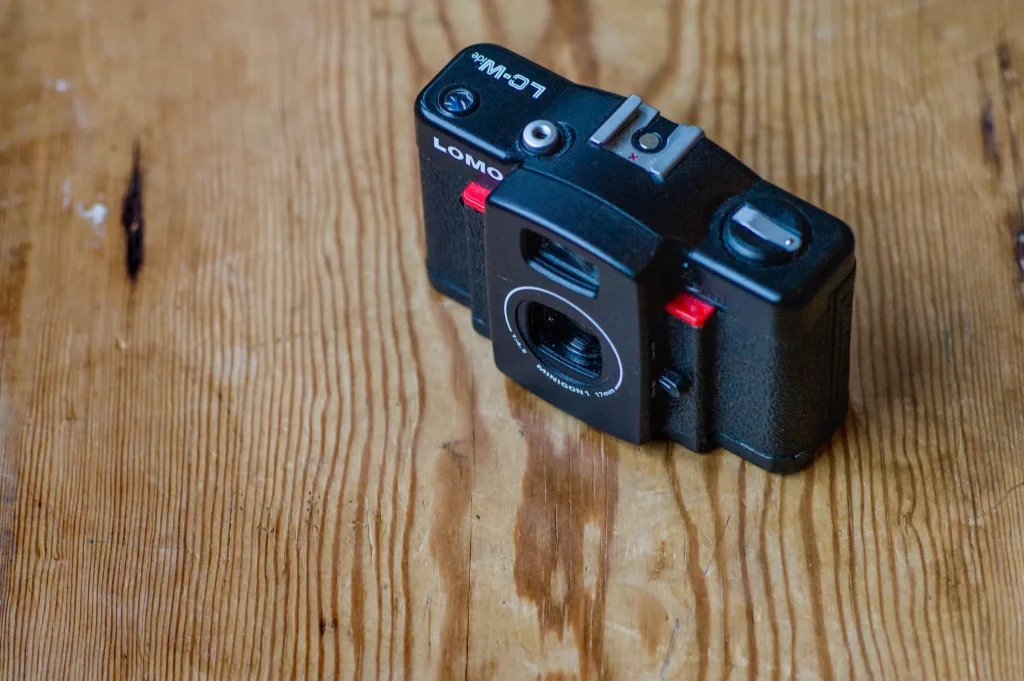
The Lomo LC-Wide experience
To be fair though, I think I come at the Lomo LC-Wide as someone who was likely to enjoy shooting with it. It’s
pocket sized, which regular readers will appreciate is a plus point in my book. It’s also fully automatic in terms of its exposure, with no options to override outside of manually rating the film to a different exposure index with the manual ISO dial. It also only two focus settings.
Basically, it’s very much a point & shoot camera, which is a good thing in my world as these sorts of cameras make me care less about what I’m doing. They don’t make me feel so much like every shot needs to have 100% concentration applied to it. I think this comes from taking photographs as a profession. I used to think that carrying heavy cameras gave me back ache when I was working, now I shoot light weight cameras and still get back ache, I’ve realised it’s because I walk around all day tense with concentration. Point & shoot cameras help me switch off that part of my brain… and I like that feeling!
Ultra wide concentration
What’s interesting about the Lomo LC-Wide for me personally is that I think there’s some parity in the above response to my work and the feeling I experience when shooting ultra wide lenses. Shooting with very wide angle lenses is ordinarily quite hard, and as such doing so somehow further taps into that part of my brain the needs to concentrate really hard on what I’m doing. I enjoy taking photos with them just as I enjoy taking photos as a job, but the level of concentration is just something I can’t be bothered with a lot of the time.
This is not to mention the fact that the last few times I’ve been out with an ultra-wide, I’ve taken a tripod. Which is fine, it helps to control the camera for perfect framing, but I just end up getting obsessive about composition, which just too much thinking for my liking a lot of the time!
Simple framing
What I’ve found addictive about the Lomo LC-Wide is that it helps me escape that need to concentrate so hard. Shooting with it I’ve found myself being much less concerned about perfect framing. In fact a lot of the time I’ve found myself not even bothering to look through the viewfinder.
The finder isn’t particularly accurate even when you do look through it, so trying to use it for precise framing is almost pointless. Realising this had an almost instant affect on me – there’s no point in trying to concentrate on proper composition and framing with a camera that doesn’t have the tools to allow you to so.
In practice I’ve actually found that 17mm feels like a very easy field of view to frame with mentally anyway. You can pretty much point it roughly in the right direction and you’ll probably get something of what you wanted in frame. This might sound slapdash, but when taking into account my usual approach to ultra-wide photography, it’s nothing short of refreshing!
Simple function
Then of course theres the fact that when shooting the Lomo LC-Wide, the only control you have is the aforementioned very basic focus switch. Near focus gives you a 0.4m-0.9m, and far gives you 0.9m to infinity. In practice since the camera automatically controls the aperture, even those simple numbers are very much an approximation, so again you are very quickly forced to stop worrying too hard about what will and won’t be in focus.
There is of course all the half frame, square frame and multiple exposure stuff the Lomo LC-Wide does… but frankly I can’t be arsed with any of that! Why complicate things with those added choices…?
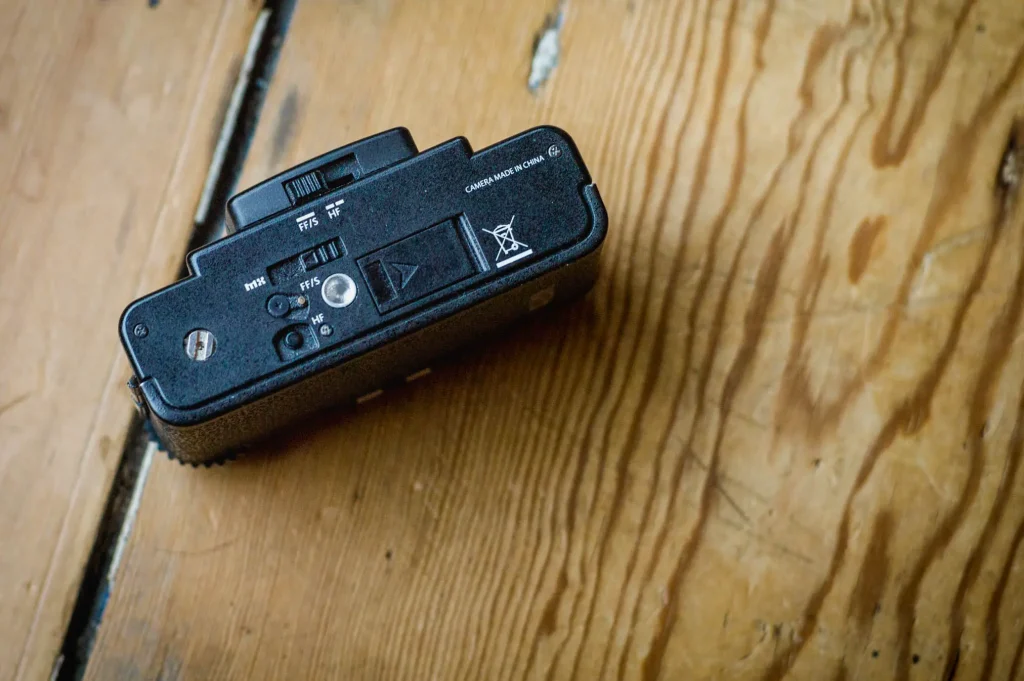
Minimum brain function wins
This basic function and slightly poor viewfinder works together to just keep the thought processes to the absolute most basic of levels. On a lot of occasions I’ve just seen an idea for a shot, made a snap decision about focus, put the camera in a place that looks like it will achieve something along the lines of what I have in my head and pressed the button and let the auto-exposure do the rest. The crazy thing is, in the shots where I’ve done this, I’ve actually found greater success than when I’ve tried to concentrate harder or been more considered in my approach – the camera simply doesn’t allow precision, so try to use it that way and you increase your chances of disappointed.
The results
This lack of precision is mirrored in the results too. You’re instantly on to a loser if you set your expectations to high – you’re definitely not going to find anything close to objective perfection in the results from the Lomo LC-Wide.
The 17mm lens’s most notable positive feature is that does exhibit quite a fair amount of contrast. The contrast gives images a sense of clarity, but look too close and you’re going to find a lack of objective sharpness.
Corners fall of to a very strong vignette too, and any semblance of sharpness there was smears well away toward the edges of the frame. With the camera I’ve been shooting with I’ve also found smearing to the left half of the frame when using the far focus. And then on top of that there’s the whole heap of severe and very difficult to correct distortion.
Take this next image as an example. I’d argue that this could be considered quite a conventional ultra-wide lens image. You can see all of the traits that I’ve mentioned impacting on it in a way that many would declare as negative. And to be fair, I’d probably agree – this image would be better if at very least the distortion and left frame smearing weren’t so strongly present.
So bad lens, bad camera? Well no. Those who read this blog regularly will know that sort of attitude doesn’t wash with me. A bad photo is much more likely caused by any number of bad choices before it’s caused by a bad lens. In this case, the above subject matter – at least to mind – is just a poor choice for this camera/lens.
What I’ve found works best with the Lomo lC-Wide is poking it into places that are going to result in interesting perspectives. To be fair, I think that’s good advice for the use of any ultra wide lens, with this camera though, it’s almost essential as quite often the odd perspectives either hide or work with the objective shortcomings of the lens.
Take this next image – possibly my favourite from the camera so far. I could see in my head a black & white photo a sort of dystopian tower block within a fenced off enclosure. I didn’t want the fence to be too intrusive to the shot, but obviously it was still a key point of interest. My only real concern when taking the image was making sure the gap in the fence was relatively central to the frame. Luck made the roof of the building fit within that gap – I didn’t look through the viewfinder, I just lined the camera up with the hole in the fence and shot. None of the objective shortcomings impact on this image in the way they do on the previous canal shot.
In this next shot my concern was blocking the view of a parked white van with the tree. I couldn’t have looked through the viewfinder even if I had tried. I knew I could get some autumnal leaves in the foreground, just by putting the camera right in amongst them, beyond that and the van, I wasn’t really thinking about much else, I just figured it would make for an interesting and potentially unusual composition.
This image is another favourite. It would have been impossible to frame by eye this way – at least without putting my face on the mucky Manchester street. I saw the puddle was going to give the me reflections and symmetry, the position of the sun looked ideal, and the building to the left I felt would give a bit of structure. I put the camera on the ground on something clearly a bit unstable and took the shot.
What’s useful about this photo in the context of a review like this is that it makes a point about the lack of need for objective quality. It’s not just the lenses fault this image isn’t sharp, there’s motion blur from the camera choosing a longer shutter speed too. Yet, despite this, I personally think that it makes for an aesthetically pleasing image. I’m sure some will disagree, but hopefully a subjective opinion is enough to emphasise my point given the context?
A few more shots
Of course not every photo I’ve taken with the Lomo LC-Wide has worked out as well. But, enough have worked out well for me to realise the possibility in the approach and qualities this camera brings.
This is just “lomography”
The irony in all this is, it’s taken me getting to the end of writing this post to realise that all I’ve really written is an allegory to the ideals of Lomography as a whole. The short version of the above is basically that if you take the Lomo LC-Wide too seriously, if you try and use it properly it will probably let you down. If on the other hand you let your hair down, experiment a bit and have fun with it, accept a hand from the good lady serendipity, you might find yourself with a aesthetically pleasing photo that if looked at closely is likely going to be ranked quite poor objectively speaking. Who’d a thunk that would be the outcome of using a Lomo camera?! Well of course, I suppose I knew this was going to be the outcome really…
What I didn’t know, and definitely didn’t expect was that I was going to get so much out of the experience personally. I’ve always liked the look kicked out by these Lomo cameras (at least when people point them at the right sorts of subject matter), I’ve just never been that sure I’d be taken in by the approach I’ve found to work with this particular camera. Not looking through the viewfinder to take a photo used to feel almost sacrilegious, with the Lomo LC-Wide it feels more like its part of the skill required to use it at its best.
Where things get really interesting, is in the shortcomings the camera presents. If I’m going to use the Lomo LC-Wide effectively I have to use it in the way it prescribes; I have to use it as a Lomography camera. And use it as a lomography camera is exactly what I’ve done. In doing so I’ve enjoyed myself more than I expected and got results that I like more than I expected – what more could I wish for from a camera than that?
Not much is the answer, which is why what was a loan camera now belongs to me. It has been living in my coat pocket since the day it landed on my desk 4-5 weeks ago, and I can’t see it not getting carried around next to any number of other cameras just as a matter of course for the foreseeable future.
In short
The Lomo LC-Wide is far from perfect, in fact if I were to rank it by its objective merits I’d probably say it’s a bit pants. But given the right attitude to the process, the results and a good eye for subject matter that works with cameras like this it can just as rewarding as any camera you’ll find me talking about on this blog.
If you asked me if I could recommend it… well yes, actually I think I would! The recommendation would come with more reservations and caveats than I’ve attached to any other camera I’ve written about to date, many of which would probably put vast swathes of photographers off… but given a go with it, I’d reckon most of those same photographers would have a lot of fun with the Lomo LC-Wide! I really enjoy shooting mine!
The Lomo LC-Wide can be bought new from Lomography here, or you could
Check out Stephen Dowling’s review on Kosmofoto here
Share this post:
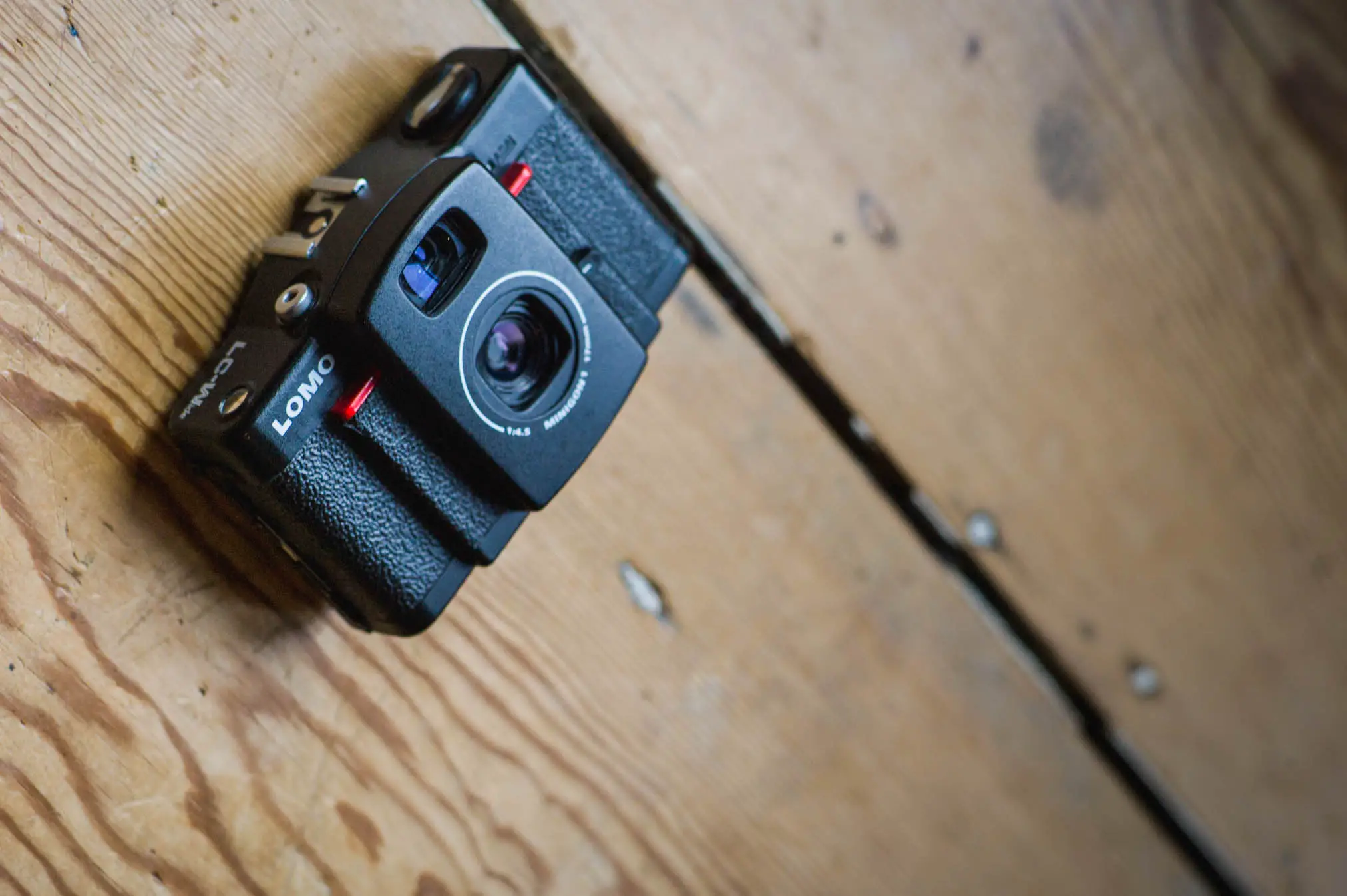
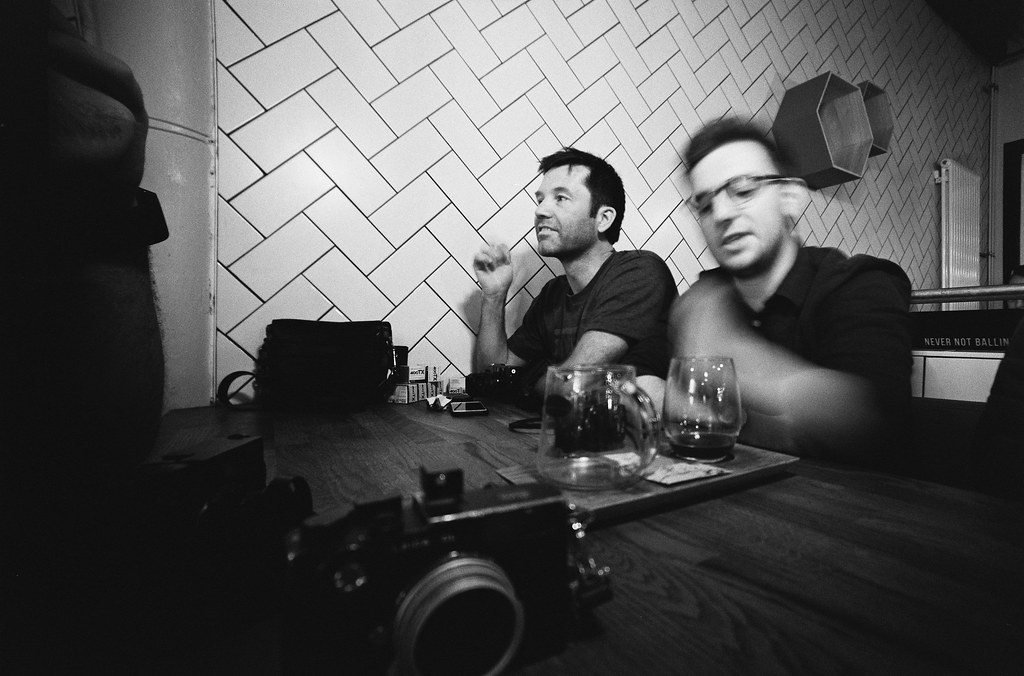
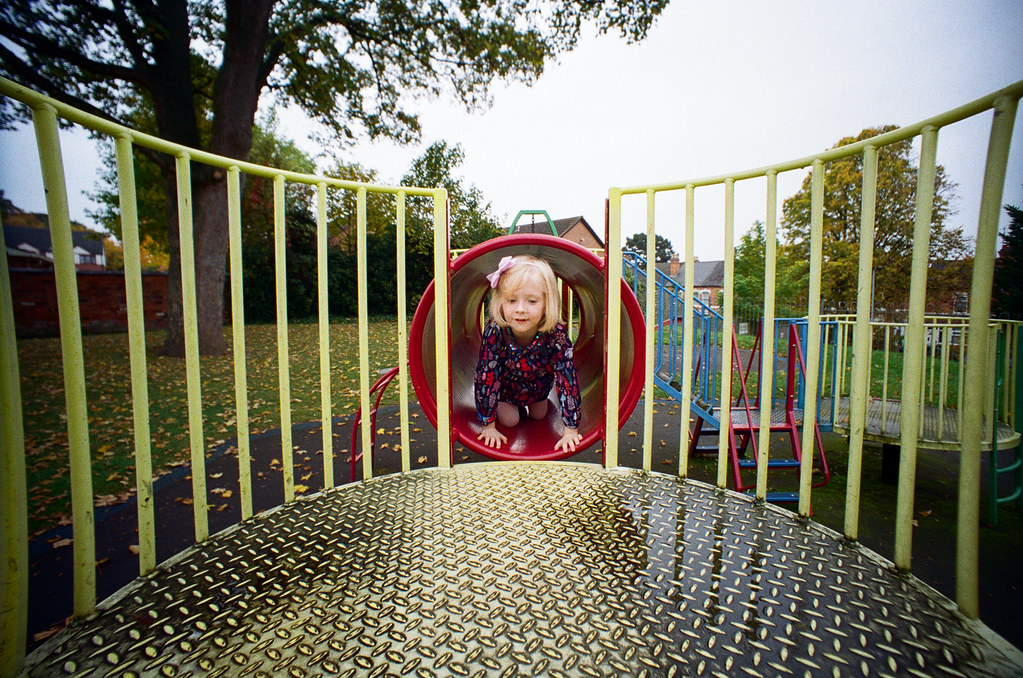
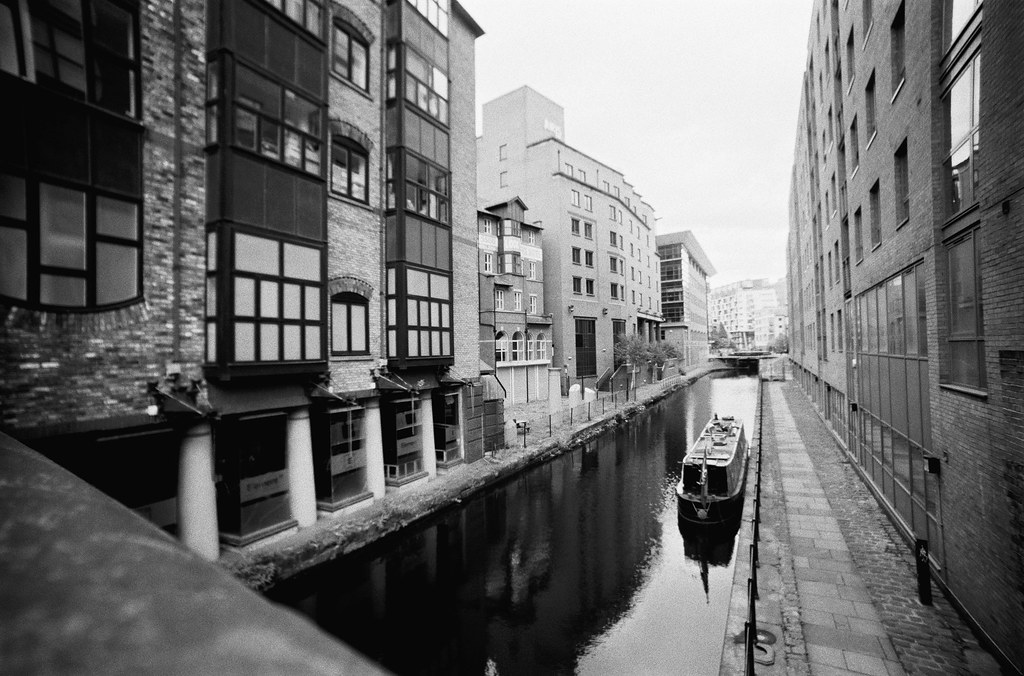
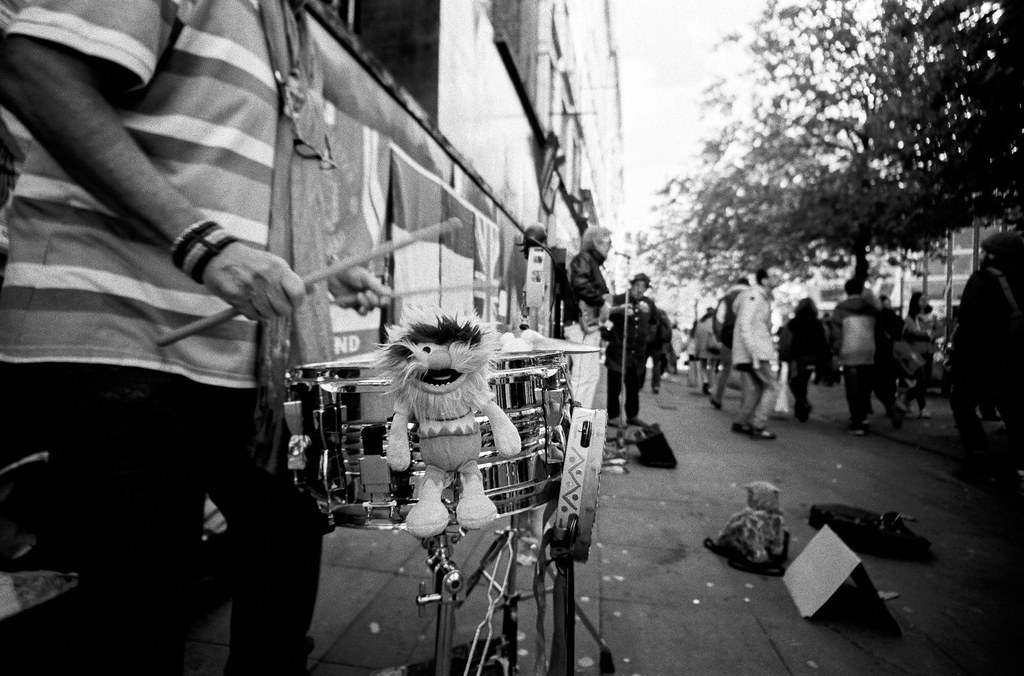
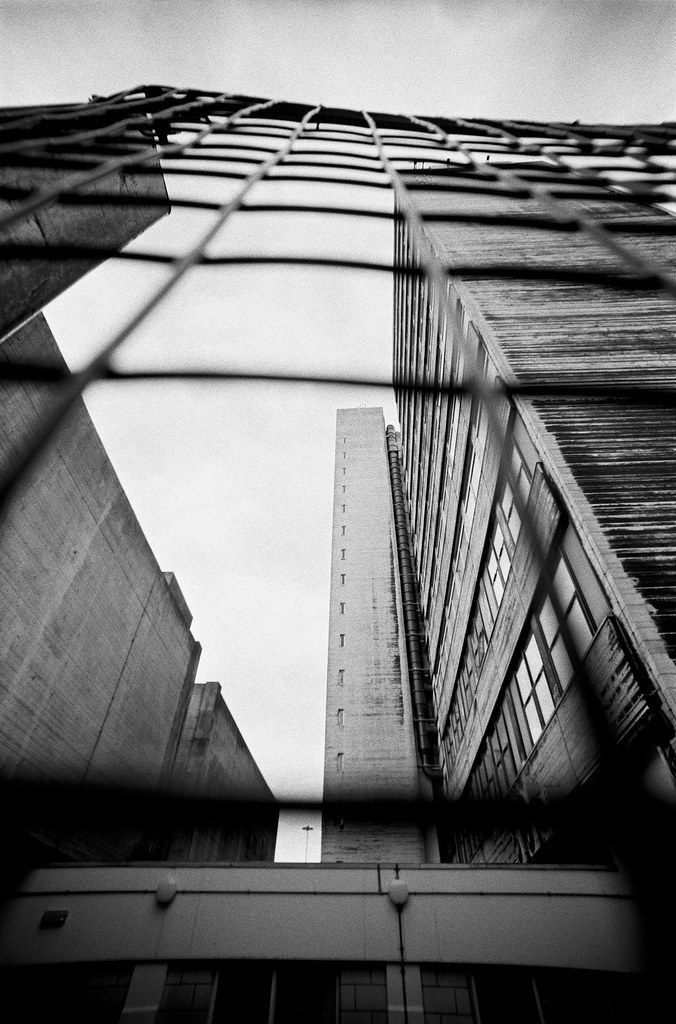
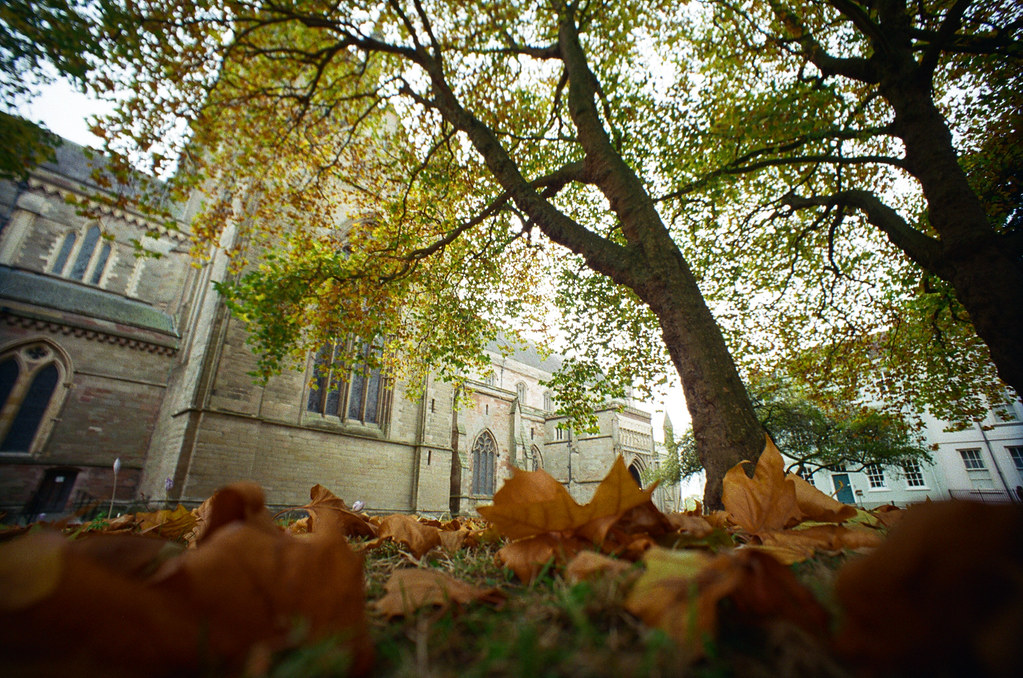
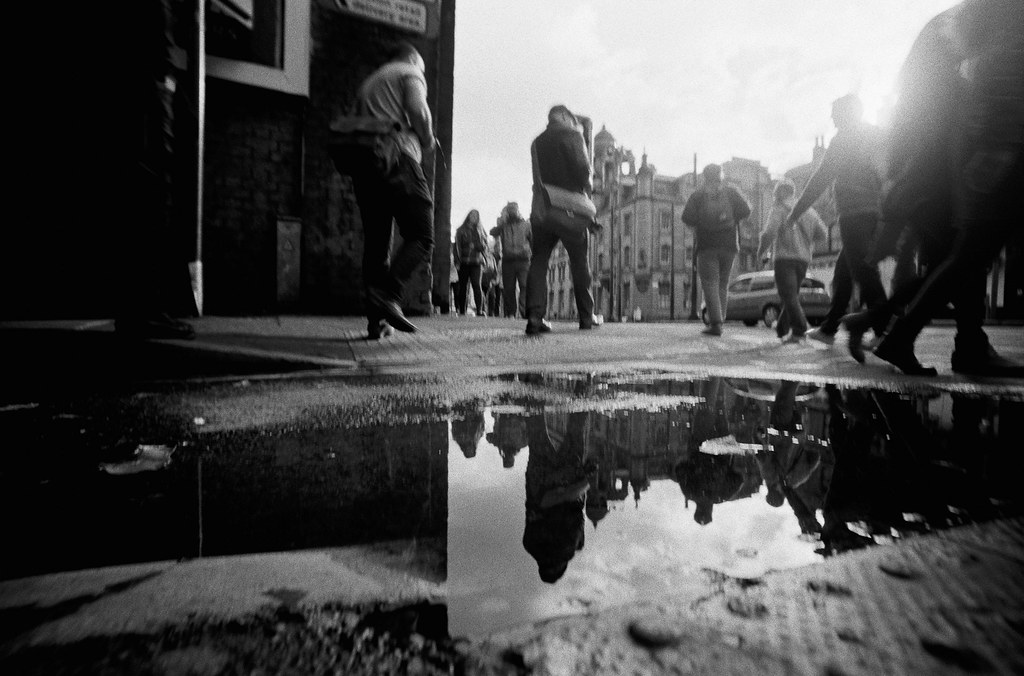

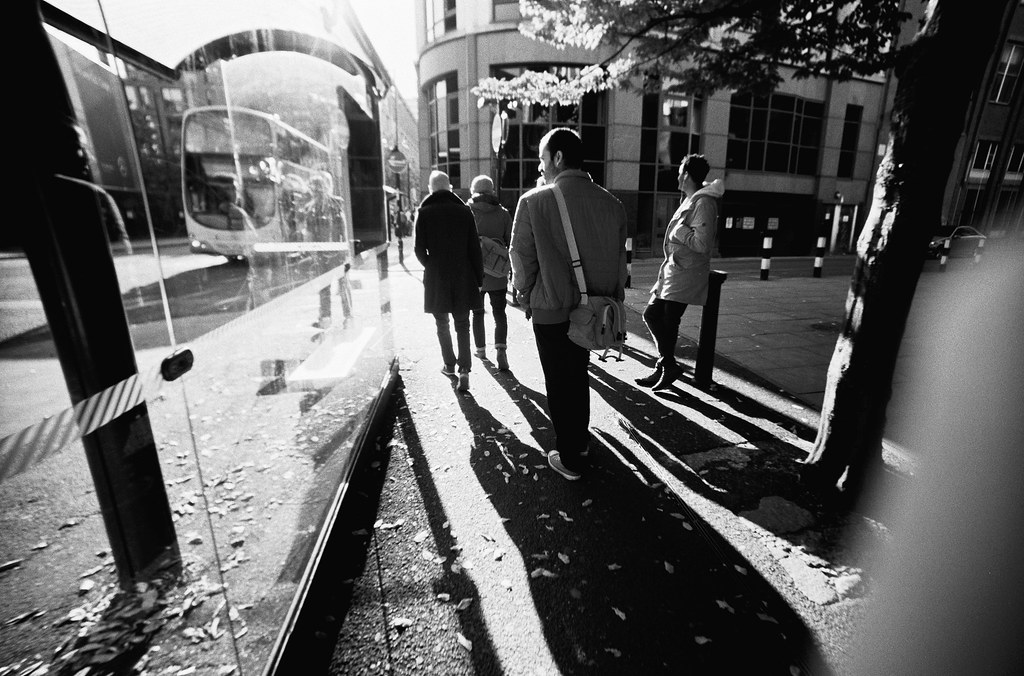
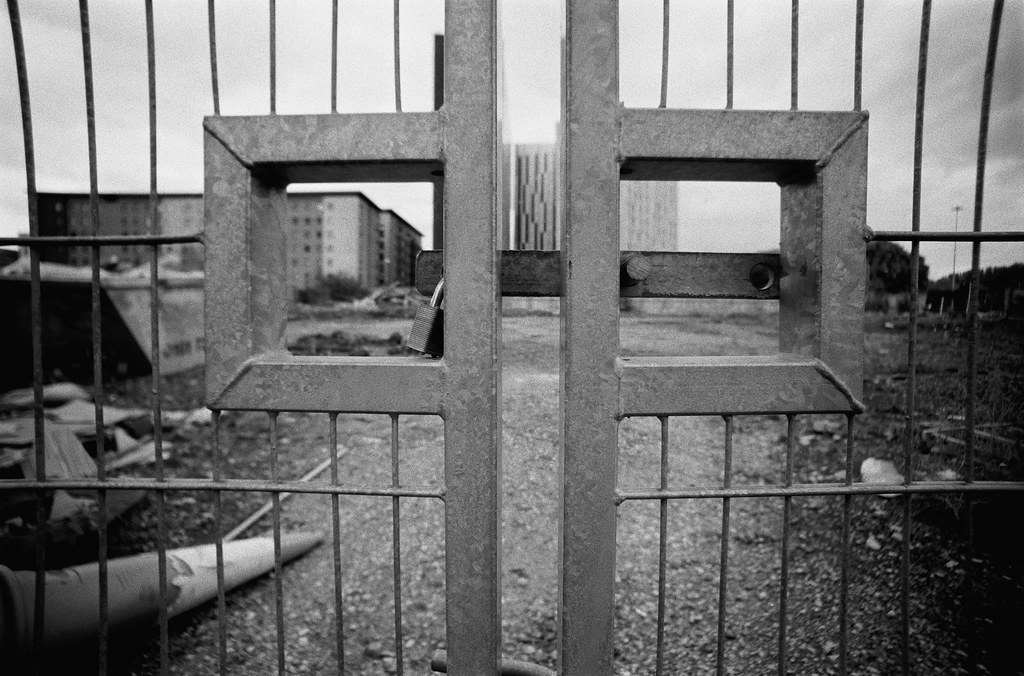









Comments
Alex Hakimi on Lomo LC-Wide Review – The Ultra-wide, Point & Shoot
Comment posted: 22/11/2016
Comment posted: 22/11/2016
Comment posted: 22/11/2016
Comment posted: 22/11/2016
Jonathan Reeves on Lomo LC-Wide Review – The Ultra-wide, Point & Shoot
Comment posted: 22/11/2016
This is a good review. Partway through reading, I discerned the conclusion that you ulitmately gave: it's the epitome of the Lomography approach, and it encourages you to pursue it with reckless abandon.
I share your experience in my use of the LC-Wide. Trying too hard generally caused me to be unsatisfied with what I achieved, but "fostering" the Lomography mindset temporarily yielded photos that I fell in love with.
And unfortunately, I share your experience with the smeary left side. It's very curious, and I came over to this review with a lot of eagerness almost strictly because I wanted to know if you found that, too. Happily (unhappily), you did.
It's hard to replicate the drama given by the combination of the ultrawide perspective and the unpredictable shutter. I think that's the essence of the appeal for me.
I commend your fantastic photos. These are a far cry from the typical review photos that you sometimes see, and it's very clear to me from these shots that you've adopted it--both financially and emotionally. My thumbs up to you.
Comment posted: 22/11/2016
Comment posted: 22/11/2016
Comment posted: 22/11/2016
George Appletree on Lomo LC-Wide Review – The Ultra-wide, Point & Shoot
Comment posted: 22/11/2016
The process of lomohraphy was one of the most curious in photography last two decades. First they explained what was pretended to be that.
During those times, perhaps rigid truly in photography terms, they seemed bringing a new fresh air. Like saying everything is allowed.
After that, places like the one you have close, The photographer's gallery, a traditional exhibit and teaching place, started hanging photographs labelled as lomography art.
Also, some others like ICP recommended or at least sold some different toy cameras.
So things were moving and lomography settled everywhere mainly selling plastic cameras and a few rolls at a quite good price.
In my opinion that's all about it. My own conclusion is lomography is nothing in particular.
Don't getting you more tired of my words, the fundamental thing is I agree you in the spirit of your post.
I was shooting these last days with my very first camera, a "Viking" from 50 years ago to which I removed the lens and installed a pinhole instead.
Pocket size and absolutely nothing to be thought other that you need a half, 1 sec, 5 or ten. Then you enjoy, no matter how exactly you're going to get.
Photography has a pleasure side that very ofter are lost into focal length, aperture or rendering.
That's from my own harvest though...
I like those photographs, you made the good choice
Comment posted: 22/11/2016
Rob on Lomo LC-Wide Review – The Ultra-wide, Point & Shoot
Comment posted: 22/11/2016
Comment posted: 22/11/2016
AFAIK on Lomo LC-Wide Review – The Ultra-wide, Point & Shoot
Comment posted: 22/11/2016
Sorry for nitpicking, but effect, not affect.
Comment posted: 22/11/2016
Comment posted: 22/11/2016
Comment posted: 22/11/2016
Comment posted: 22/11/2016
Comment posted: 22/11/2016
Comment posted: 22/11/2016
Comment posted: 22/11/2016
Comment posted: 22/11/2016
Comment posted: 22/11/2016
Aukje on Lomo LC-Wide Review – The Ultra-wide, Point & Shoot
Comment posted: 23/11/2016
Comment posted: 23/11/2016
Comment posted: 23/11/2016
John Lockwood on Lomo LC-Wide Review – The Ultra-wide, Point & Shoot
Comment posted: 23/11/2016
Comment posted: 23/11/2016
Comment posted: 23/11/2016
Comment posted: 23/11/2016
Comment posted: 23/11/2016
Comment posted: 23/11/2016
Neilson on Lomo LC-Wide Review – The Ultra-wide, Point & Shoot
Comment posted: 27/11/2016
Comment posted: 27/11/2016
Alan Duncan on Lomo LC-Wide Review – The Ultra-wide, Point & Shoot
Comment posted: 27/11/2016
Comment posted: 27/11/2016
Jordan Lockhart on Lomo LC-Wide Review – The Ultra-wide, Point & Shoot
Comment posted: 12/12/2016
I wanted to add an ultra wide angle lens to my collection.
I have an Olympus OM-2n, Pentax LX, Pentax MX, Nikon 35 Ti, & Bessa R.
As the Nikon 35 Ti is a non-interchangeable lens, and the LX & MX have the same mount,
I had 3 ultra wide options..
An OM mount lens, Pentax K, or Leica Thread Mount (for the Bessa R).
OLYMPUS OM-2: I recently acquired an 18mm f/3.5 but I'm selling it - I'd rather have the $800.
PENTAX LX: Another rare one I have the 20mm SMC f/4 ($300). Looking through the waist finder on an f/4 lens is too dark for my liking. Alternative would be to adapt a screw mount Takumar fisheye pancake 17mm, but as pretty as it is it's f/11!
BESSA-R: There's a Russar 20mm f/5.6 ($600) I was looking at, and the Voigtlander Heliar 15mm ($400). Both would need an optical finder so compositional brightness is not a problem.
I've been eyeing the LC-W for a while. When I saw a good deal I decided it would be my ultra wide angle solution. But that's too many cameras for me so I will be using the LOMO to replace my whole OM system (24mm f/2.8, 28mm f/3.5, 50mm f/1.4, 100mm f/2.8). I know, crazy. But all my OM lenses are covered by the focal ranges of my other cameras.
Obviously I won't have a lens to potentially use on other cameras including digital, but I don't mind. Maybe even better though I have a whole new camera for the price of a lens - and less the weight!
Comment posted: 12/12/2016
Comment posted: 12/12/2016
Mr Bassie on Lomo LC-Wide Review – The Ultra-wide, Point & Shoot
Comment posted: 18/06/2017
Comment posted: 18/06/2017
Benson on Lomo LC-Wide Review – The Ultra-wide, Point & Shoot
Comment posted: 25/03/2018
Transnistria on a Lomo LC-A - Kosmo Foto on Lomo LC-Wide Review – The Ultra-wide, Point & Shoot
Comment posted: 26/04/2020
Casey on Lomo LC-Wide Review – The Ultra-wide, Point & Shoot
Comment posted: 10/09/2021
LOMO LC-Wide – Expansive Lomography - Photo Thinking Review on Lomo LC-Wide Review – The Ultra-wide, Point & Shoot
Comment posted: 06/11/2022